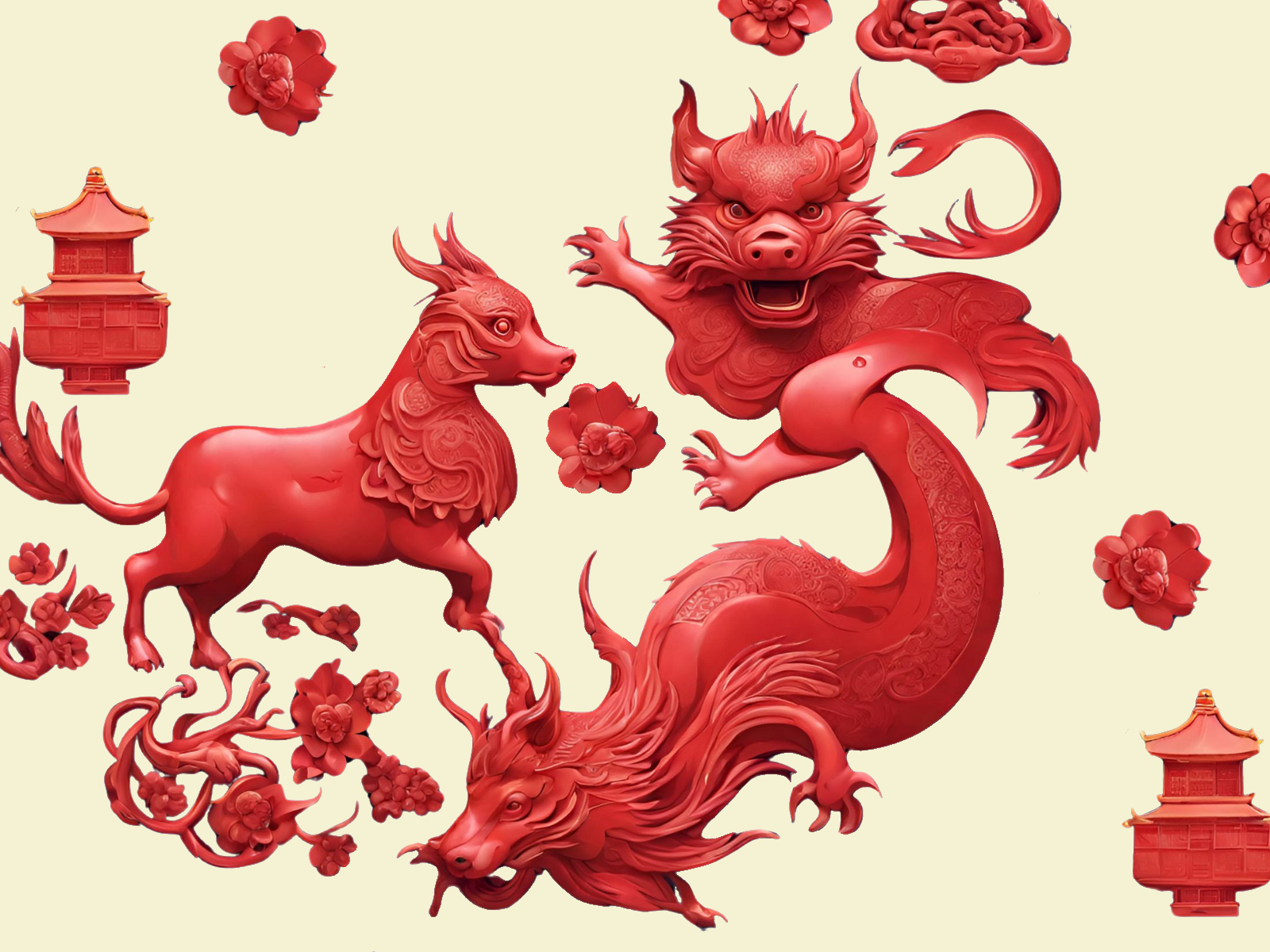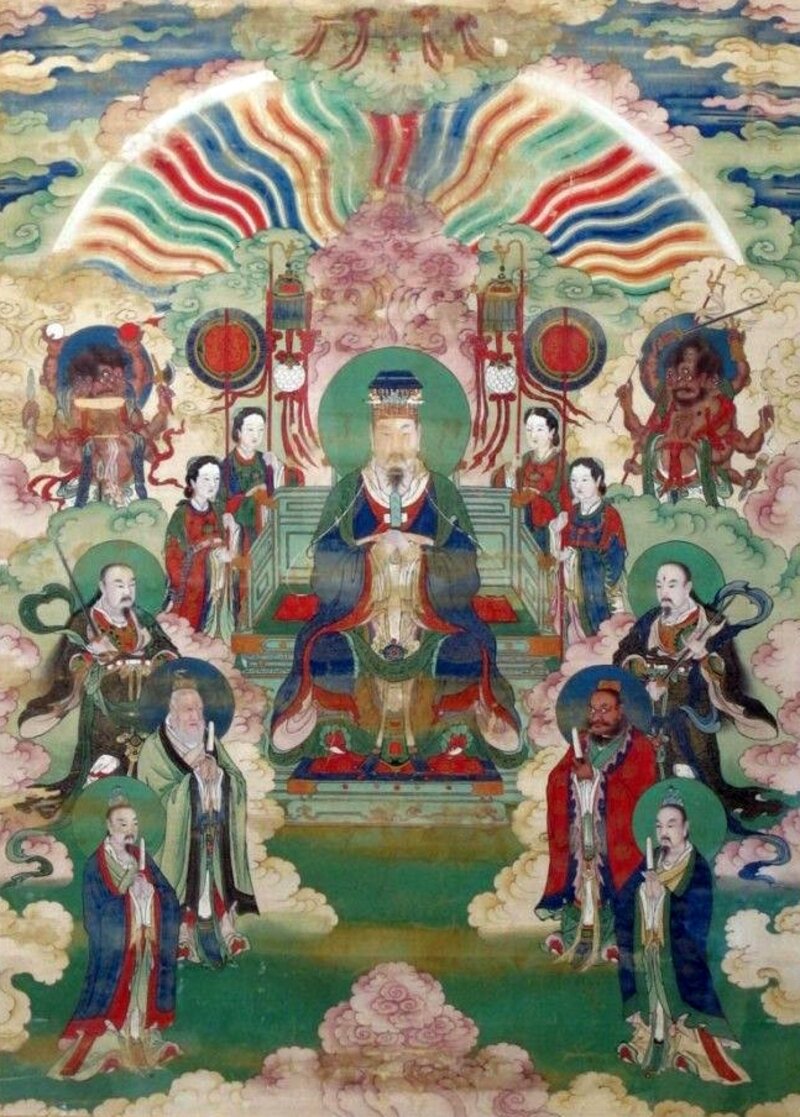Chinese New Year: the origins of the zodiac
Where do Chinese astrological signs come from? Why these animals and in this order? Akteos invites you to learn more about the origins of the Chinese zodiac.

This February 10, 2024, we will celebrate the transition to the new year of the Chinese lunar calendar. Celebrated in China and many Asian countries, Chinese New Year is one of the most important holidays in Chinese culture and is accompanied by many rituals and traditions.
In 2024, make way for the Wooden Dragon, the fifth animal of the Chinese zodiac. According to Chinese astrology, the Dragonis a powerful and emblematic symbol, it is synonymous with success and power. Associated with the Woodelement, it portends a year marked by success and growth.
The 12 signs of the Chinese zodiac
The Chinese zodiac also called Shengxiao is a system of astrology that dates back millennia in Chinese tradition. Made up of 12 symbolic animals, it divides time into a 12-year cycle, during which each of the signs is represented.
Each year of the Chinese zodiac is also influenced by one of the five traditional elements (wood, fire, earth, metal, water), creating a unique combination of attributes for each twelve-year cycle. In 2024, the year falls under the sign of the Wooden Dragon.
Each sign of the Chinese zodiac is classified in a specific order and has specific characteristics that a person born under this sign would demonstrate:
- Rat (鼠 shǔ)– responsiveness, intuitiveness, insight
- Ox (牛 niú)- reliability, strength, determination
- Tiger (虎 hǔ)– bravery, confidence, charisma
- Rabbit (兔 tù)– elegance, kindness, responsibility
- Dragon (龙 lóng)– intelligence, power, success
- Snake (蛇 she)– clairvoyance, intelligence, insight
- Horse (马 mǎ)- energy, liveliness, dynamism
- Goat (羊 yáng)– calm, gentleness, creativity, perseverance
- Monkey (猴 hóu)– intelligence, curiosity, humor
- Rooster (鸡 jī)– observation, pride, optimism
- Dog (狗 gǒu)– honesty, prudence, loyalty
- Pig (猪 zhū)– generosity, concentration, energy
But do you know why these 12 signs appear in this order? According to an ancient legend, a great race organized by the Jade Emperor was the origin of this classification.

“The Great Race”, between alliances and strategies
It is important to note that several versions of this legend exist, and they can vary in details. Like many Chinese legends, often passed down through oral traditions and ancient writings, there are regional and cultural variations.
According to legend, when no means of measuring years existed, the Jade Emperor (supreme deity of Chinese tradition) was asked by humans to create a way to locate oneself chronologically. He proposed the establishment of a 12-year cycle, during which each year would be represented by an animal.
To define them, he organized a big race open to all animals on his birthday. To win it and have the honor of representing a year, the animals had to successfully cross a fast-moving river and reach the Gate of Heaven by ranking in the first 12.
On the day of the race, the rat got up early and came to the river. As the current was strong, he stopped on the bank. He was joined by the buffalo which began its crossing. Strategically, the rat jumped into the ear of the buffalo who agreed to help him. Once crossed the river, the rat jumped from the buffalo's ear and presented itself 1st at the finish line, followed by the buffalo in 2ndplace.
Despite its speed, the tiger came 3rdbecause the force of the current had made it deviate from its trajectory.
4thplace was awarded to the rabbit who, thanks to his agility, moved with the help of stones and logs.
To everyone's surprise, the majestic dragon came in 5thposition. Although able to fly, it is said that he heard cries of villagers trapped in a fire and he decided to help them. In some variations of this legend, the dragon would also have helped the rabbit and the latter would not have realized that he had helped him in his crossing.
Arriving at a gallop, the horse managed to cross the river but was surprised by the snake which had hidden itself. Thus the snake placed itself in 6thplace and the horse in 7thplace.
Arriving at the same time on the bank, the monkey, the rooster and the goat decided to team up and use a raft to cross. The goat got the 8thposition, the monkey the 9thposition and the rooster the 10thplace.
The dog showed up in 11thposition, explaining that he had fallen behind because he wanted to take advantage of the river water to cool off.
Finally, the pig closed the ranking by arriving in 12thplace. He had been hungry, stopped to eat then fell asleep before continuing his run.
A cultural heritage
The lunar calendar follows this order established by the race, the rat first and the pig last, before starting again. This is how the Chinese calendar continues to influence the life and traditions of China, as well as the Asian world.
The lunar calendar, reflecting the cycles of the zodiac, punctuates festivities, celebrations and even important decisions in many regions of Asia. It is anchored in people's daily lives, from the selection of auspicious dates for weddings to predictions of individual destinies.
The zodiac transcends simple prediction by connecting generations through stories rich in wisdom, transmitting values and life lessons. So, in this dynamic between tradition and modernity, we can ask ourselves: how do these ancestral beliefs manage to integrate harmoniously into our current era? And to what extent do they influence the perception and management of time?

